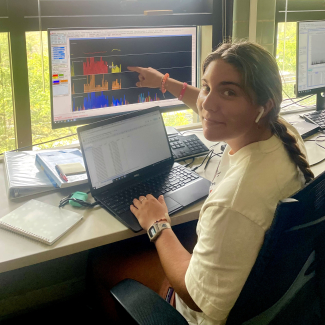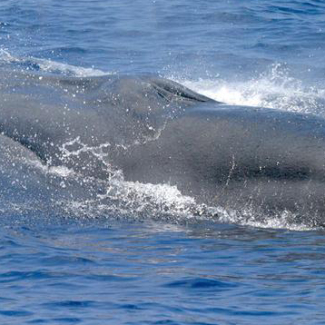Marine mammals are found in marine ecosystems around the globe. They are a diverse group of mammals with unique physical adaptations that allow them to thrive in the marine environment with extreme temperatures, depths, pressure, and darkness. Marine mammals are classified into four different taxonomic groups: cetaceans (whales, dolphins, and porpoises), pinnipeds (seals, sea lions, and walruses), sirenians (manatees and dugongs), and marine fissipeds (polar bears and sea otters).

New facility provides space to care for stranded harbor seal pups like this one, rehabilitated by the Marine Mammals of Maine. (Image credit: Marine Mammals of Maine)
What is a marine mammal?
What makes a marine mammal a marine mammal? They must meet the characteristics of all mammals — they breathe air through lungs, are warm-blooded, have hair (at some point during life), and produce milk to nurse their young — while also living most or all of their lives in or very near the ocean.
Cassidy Beach spent her 2023 Hollings summer internship at the Northeast Fisheries Science Center using passive acoustic monitoring to explore dolphin and harbor porpoise habitat use at Stellwagen Bank National Marine Sanctuary (SBNMS). By detecting and analyzing the sounds of dolphin and harbor porpoises, work like Cassidy’s can help fill the gaps in knowledge about habitat use of these species in SBNMS.
Marine mammal ecology
Marine mammals represent a variety of ecological roles, including herbivores (manatees), filter feeders (baleen whales), and top predators (killer whales). Mammals evolved on land around 160 million years ago. Each taxonomic marine mammal group evolved from a different group of land mammals, whose ancestors separately ventured back into the ocean environment. Despite these different origins, many marine mammals evolved similar features — streamlined bodies, paddle-like limbs and tails — through convergent evolution.
During a vessel survey in the Gulf of Mexico, scientists sighted Rice’s whales! Rice’s whales are endangered, and each sighting of this species is important to building our scientific understanding of the population.
Types of marine mammals
Cetaceans offsite link (whales, porpoises, and dolphins) are categorized into two main groups: baleen whales (mysticetes) and toothed whales (odontocetes). They spend their lives in water, and have many adaptations offsite link to their entirely aquatic lifestyle. There are over 70 different species of cetacean.
Pinnipeds offsite link are in the suborder pinnipedia, which means “fin-footed.” These carnivores use flippers to move both on land and in the water. Pinnipeds spend the majority of their lives swimming and eating in water and come onto land or ice floes to bear their young, rest, and molt.
Like cetaceans, sirenians offsite link also spend their whole lives in water. They are the only entirely herbivorous group of marine mammals. Sirenians are named for sirens, the legendary Greek sea beauties who lured sailors into the sea. Some think historic mermaid sightings were actually sirenians, not the mythical half women, half fish.
The marine fissipeds offsite link are considered marine mammals, but spend most of their time on land and only part of the time in the water, mainly to hunt for their food.
Hi everyone! My name is Courtney White, and I am a 2022 EPP/MSI scholar studying chemistry and marine biology at Nova Southeastern University. This summer, I conducted research at the Alaska Fisheries Science Center's Auke Bay Laboratories, which are located at the Ted Stevens Marine Research Institute in Juneau, Alaska. My project focused on developing a new method for measuring the amount of persistent organic pollutants in whale baleen.
Threats and protection
Threats to marine mammals are largely from human impacts, including accidental capture in fishing gear, habitat destruction, poaching, pollution, harassment, and ship strikes. All marine mammals in waters of the United States are protected under the Marine Mammal Protection Act (MMPA). NOAA Fisheries collaborates with several partners to protect these species. Anyone can help protect marine mammals by showing proper ocean etiquette. Admire them from a distance; never touch, feed, harm, or swim with a marine mammal.
Hi, My name is Allie Redford, I am a 2022 Hollings scholar, and this summer I studied sperm whale foraging activity using passive acoustics at the Northeast Fisheries Science Center in Woods Hole, Massachusetts.
EDUCATION CONNECTION
The education resources in this collection provide educators and students opportunities to explore the adaptations, population dynamics, ecology, threats, behaviors, and anatomy of marine mammals. This collection includes resources to help students better understand the biology of marine mammals as well as their role in protecting these species.




